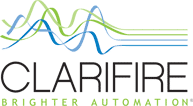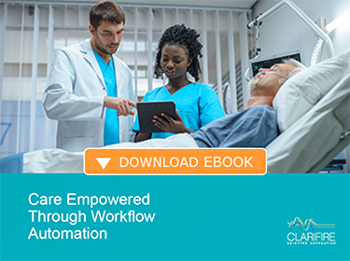In healthcare, getting lean has been proven to show impressive results and is done by making small, incremental improvements that continue to add value and eliminate wasteful processes within your organization. So how do you apply lean practices within your hospital? Like building a house, you need a solid foundation to build on.

Start by establishing your processes and measuring your success.
You can’t improve without a process. When you establish standardized processes, you don’t have to think about how you’re doing things—you can just think about how to improve. Then, you measure the results so your leaders, providers and staff will champion your efforts and continue to be an integral part of your organization’s goal to become lean.
Implement processes that add value from the perspective of the patient and eliminate the ones that don’t.
Is your organization still doing nurse leader rounds by paper? How about your audits? By making the switch to a digital process management platform, you’ll spend less time utilizing multiple systems to find and collect data related to rounds and auditing and more time managing the patients and their needs.
Take a moment to think about how it feels to be the patient. If you walk in their shoes and see each step with your own eyes, you will gain insight into what is being asked of the patient each time they come in to see a health care provider.
Whether it’s waiting, traveling across the facility to find ancillary services, or other non-value added tasks, it’s important to know the ins and outs of the patient experience from start to finish.
Align your organization around a shared vision and encourage frontline staff to drive improvement efforts.
Leaders who practice the lean methodology demonstrate respect by stepping away from the role of problem-solver and instead, take on the role of problem-framer. In this new role, the leader facilitates the opportunity for the team to implement countermeasures developed by frontline staff.
In a lean healthcare organization, all employees should be empowered to speak up about problems affecting patient care. Everyone should participate in the effort to create patient-centered processes. This practice promotes adoption as well as establishes a culture of collaboration and accountability.
Be willing to change by continuously challenging and reinventing your processes.
Set aside time with your team to figure out areas you feel need improvement. You must be willing to make corrections, fill gaps and drive change—then do it again. Often, a team may decide to implement a solution only to find that it is not working as initially intended—and that’s totally normal. In fact, it’s the willingness to try new solutions that’s more important than the results themselves.
According to the book, Advanced Lean in Healthcare, there are three lean principles in healthcare—match capacity to demand, no waiting and perfect quality[1].
That’s doable, right?
These principles are broken out into variation types including clinical, demand and operational. At Clarifire, our healthcare workflow software provides assistance for demand and operational variations. We deliver guided, controlled, distributed work with built in check points and business rules that capture errors or force changes in direction. We offer governance and oversight as well as the automatic distribution of work, the pulling in of critical data elements for evidenced-based decision making and capturing of those decisions.
Continuous improvement is easily attained—processes are optimized with quality checks and real-time outcomes, providing continuous insight into what is working and what is not.
Collaboration is promoted—patient/provider interactions as well as patient history and preferences are all collected and shared in the platform. Quality and safety is a focus—a business rules engine provides a safety net of error management, risk management and process problem solving. Visibility is gained—dashboards depict errors and risks, which means spending less time on wasteful activities and more time doing what matters.
WHY PHYSICIANS NEED LEAN
- Physicians need consistency, accessibility and organization of data.
- It helps them standardize their work, which translates to the consistent delivery of safe, effective care. Standardized work born from evidence based best practices enables physicians to apply their own creativity to improve work methods and outcomes.
- Lean is first and foremost about safety and quality—it is aimed at leveling the workload and reducing staff and physician overburden.
Our team is ready to help. Request a demo today.
Related Content:
Technology: The Problem and the Solution for Exceeding Patient Expectations
Smarter Technology Helps Hospitals Target What Patients Care About Most
Operational Inefficiencies Keeping You Up At Night? Here's How to Get a Restful Night's Sleep
[1] Albanese, Craig T., Aaby, Darin R., & Platchek, Terry S. (2014). Advanced Lean in Healthcare. CreateSpace Independent Publishing Platform.
Lauren Walling



